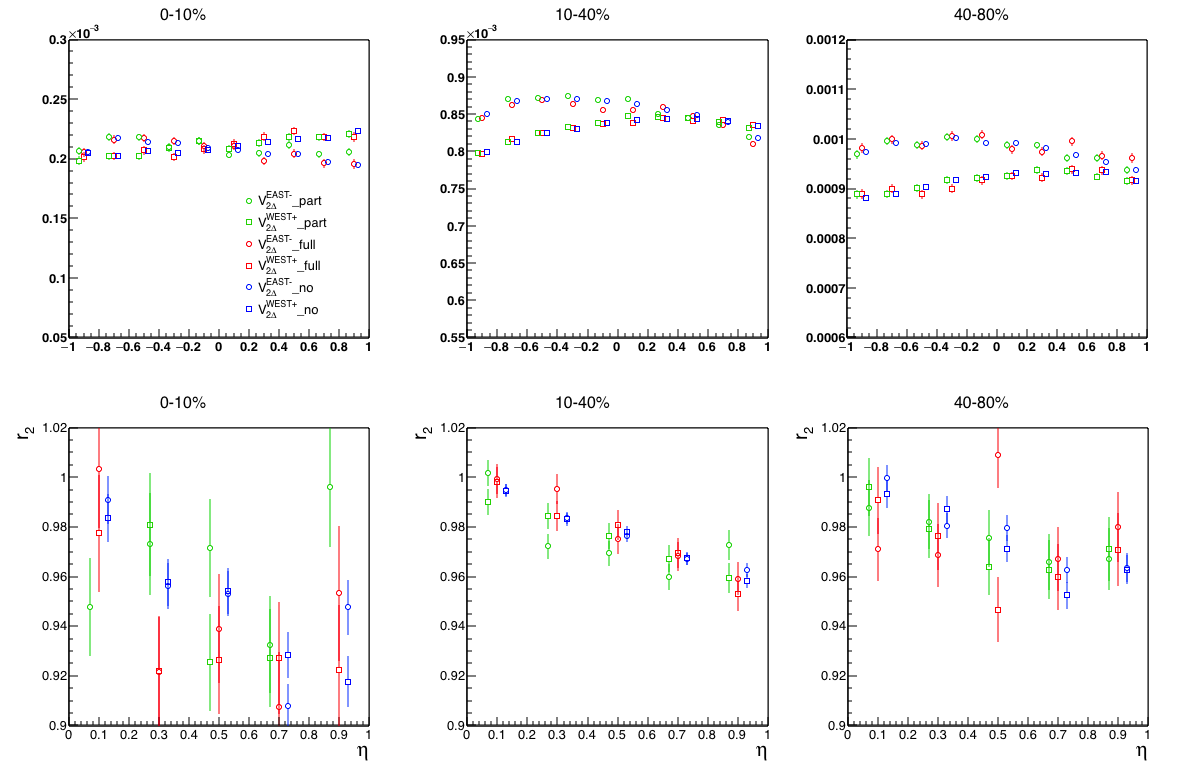Is the flow decorrelation affected by the BMM?
Gene has listed the runs affected by the BMM here.
In this study, I used three lists of runs (fully, partially, no affected by BMM) and did all the weighting & recentering list by list.
For phi weighting EPD, I only used east/west. After a few months' confusion, it finally turned out that Zhenyu saw higher EPD resolution because he used the eta range of 2.1-3.6 instead of 2.1-5.1 (whole EPD). While I played with different Vz/centrality bins for phi weighting EPD, wondering if that is what caused different EPD resolutions, I saw no obvious difference (even when comparing only east/west and e/w * 20 Vz * 9 Cent). As for why we used centrality bins, different centralities correspond to different RefMult and therefore different ADC values. In case some EPD tiles react better to high ADC signals or low ADC signals, the reaction of EPD to different centralities will be different. Mike said he would be seriously surprised if it was an effect for EPD. He is right and he is correct. Therefore, I believe there is no need to use more bins than east/west for EPD.
For phi weighting TPC tracks, I used 20 Vz * 3 pT * pos/neg charge bins and 100 bins for phi, 100 bins for eta between -1.0 to 1.0. I might need more pT bins and should reduce phi/eta bins. However, since the binning issue is not the priority of this study, I just left it in this way.
RESULTS

The upper three plots are V2\Delta of three different centralities and the lower three plots are r2. EPD EAST (-) is always marked with circles and EPD west (+) as squares. Different colors represents different group of runs: blue-no BMM effect, green-partial BMM effect, red-full BMM effect. The three sets of results are slightly displaced horizontally for clarity.
1. In the V2\Delta plots, there is a 'drop' for the most backward (left) bin. This might be due to the iTPC which sits at the negative \eta. Of course all the negative \eta bins are affected by the iTPC, however, the effect accumulates therefore the most backward bin is affected most. Here is why: if the collision point is right at Vz=0, then about half of the tracks (\eta<0) will go to the east TPC and the other half (\eta>0) will go to the west TPC. However, when Vz>0, tracks with negative \eta (but small abs value) might go to the west TPC and not affected by the iTPC. But those very backward tracks will still go to the east TPC. Overally, the most backward bin is affected by the iTPC most and therefore we see a 'drop'. I expected the 'drop' to go away when looking at the run 19 data.
2. Statistics:
full: 31.3M, part: 41.4M, no: 190M
3. Both V2\Delta and r2 look smoother with the data unaffected by BMM (however, for mid-centralities, it is actually hard to say due to the small statistics of the affected data).
CONCLUSION
Since we have enough statistics with the good data, let's just stick with them.
RESULTS of r3

- lxy1122's blog
- Login or register to post comments
